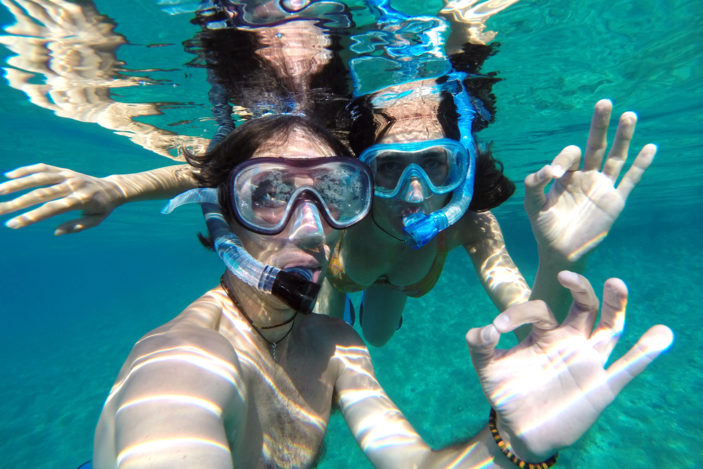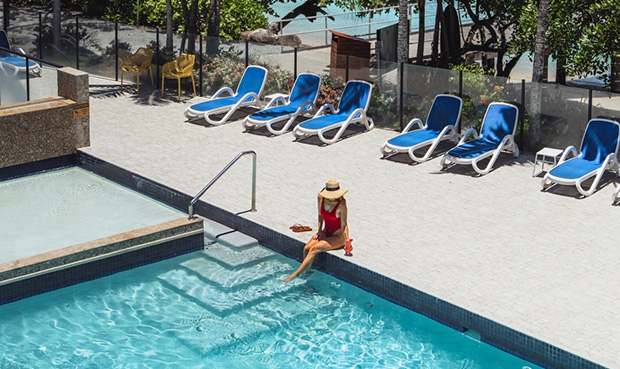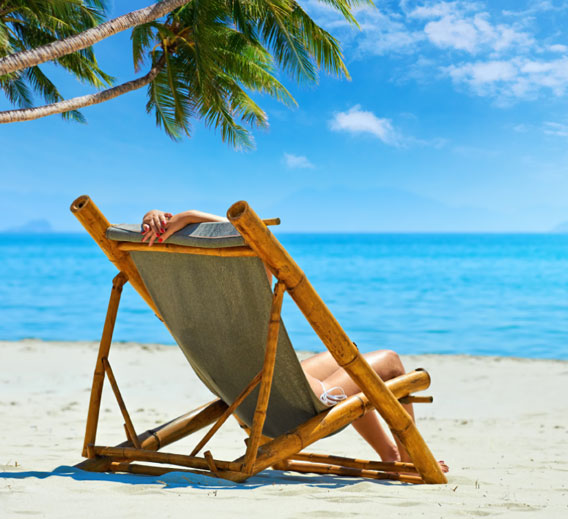Snorkelling attracts millions of enthusiasts all around the world, and in many cases, is due to the fact you do not require heavy equipment or a dive certificate, as is the case for scuba diving. Snorkelling means you can explore the incredible beauty of life beneath the ocean’s surface at your leisure. All you need to do is grab a mask and snorkel, along with some fins, and the water is yours to explore! Gliding through the ocean water and witnessing the exquisite beauty of the sea life below and around you is a feeling like no other.
We are extremely fortunate in Australia to be home to some of the world’s most breathtaking snorkelling sites, including but not limited to the infamous Great Barrier Reef, which begins in the south of Queensland off the coast of Bundaberg, and stretches all the way north to the Cape York Peninsula. A number of outstanding snorkelling locations can also be found in other areas of Queensland, as well as along the east coast of Victoria and New South Wales.
We’d like to introduce you now to some of these amazing locations, beginning in Tropical Far North Queensland, and working our way down to Victoria, the south of mainland Australia.
Mossman River, Mossman, Tropical Far North Queensland
Located amidst not only the world’s oldest but also one of the most magnificent tropical rainforests, the Daintree Rainforest, you will find Mossman River, a crystal-clear river situated just over an hour’s drive north of nearby Cairns. A remarkable and tranquil way to explore the Mossman River and its inhabitants, in addition to the neighbouring tropical rainforest flora and fauna, is by participating in a guided river drift snorkelling tour, offered uniquely by Back Country Bliss.
Operating from 9am daily, the Back Country Bliss river drift snorkelling tour ventures along the Mossman River (away from busy Mossman Gorge), and accommodates adults in addition to children aged from three upwards. River conditions must be suitable in order for tours to take place, and it is highly preferred that participants have the ability to swim.
As you snorkel your way down the crystal-clear Mossman River, drifting gently with the river’s natural current, you are likely to spot tropical fish, eels and perhaps a platypus or turtle, too! Interesting fauna that call the surrounding tropical rainforest vegetation home may be able to be seen too, including a variety of birds, lizards and beautiful butterflies.
Transfers (from Port Douglas- and Mossman-based accommodations) are included, as well as wetsuit/boots/snorkelling equipment hire and snacks.
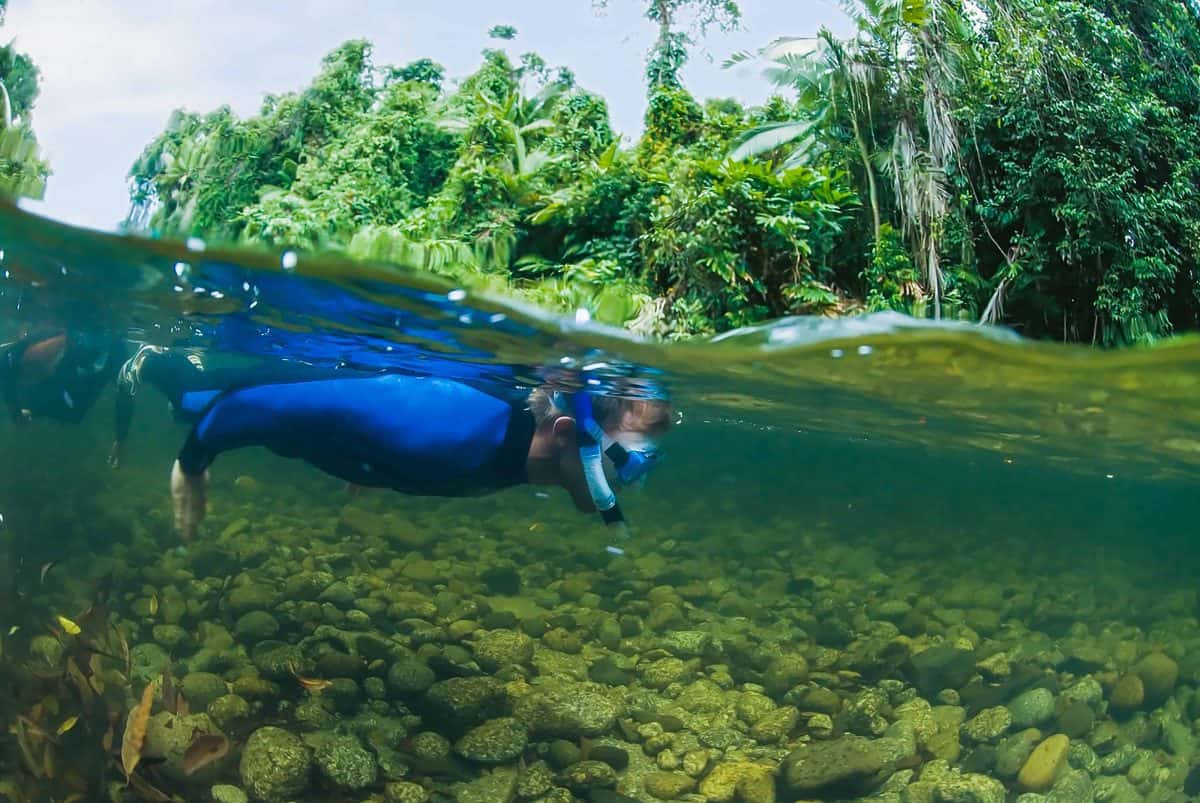
Image Credit: backcountrybliss.com.au
Low Isles, near Port Douglas, Tropical Far North Queensland
The Low Isles (comprised of two individual islands whom share the same coral reef) are located a mere 15km north-east from the popular seaside town of Port Douglas, located one hour north of nearby Cairns. When visibility is high, the Low Isles can be identified from Port Douglas’ famous Four Mile Beach. The Low Isles are able to be reached via a short boat ride (departing from the Port Douglas Marina).
The Low Isles are a good choice for people who are not confident swimmers and/or snorkellers, in addition to children, thanks to the shallow waters as well as access to the reef straight from the shore.
On a clear day (i.e. high water clarity), you can have loads of fun exploring more than 150 different types of coral, beautiful tropical fish and perhaps reef sharks and sea turtles too!
Fitzroy Island, near Cairns, Tropical Far North Queensland
Tropical Far North Queensland is home to some of Australia’s most spectacular snorkelling sites, thanks to its proximity to the magical Great Barrier Reef, the biggest coral reef system in the entire world. Many local, interstate and international tourists flock to Cairns every year, and for snorkelling from the shores of an idyllic tropical island paradise, you can’t beat Fitzroy Island.
Located just 45 minutes away via Fast Cat from the Cairns Marina is Fitzroy Island, a lush tropical island paradise (97% National Park), situated amongst the Great Barrier Reef. Fitzroy Island is home to two key beaches, Welcome Bay (where you shall arrive), as well as the breathtakingly beautiful Nudey Beach, voted number one on the list of ‘Australia’s 101 Best Beaches for 2018’. Fringed by coral reefs which are accessible straight from the shore, Fitzroy Island is one of Australia’s finest snorkelling locations.
Thanks to the proximity of the reefs (just metres) from the shore, Fitzroy Island is a great choice for families with children, as well as those new to snorkelling. Whether you choose to bring your own snorkelling gear to the island, or hire a mask, snorkel and fins from the Fitzroy Island Sports Hub, you will have the chance to experience the wonder of the reef in the warm surrounding waters, and may expect to see clown fish (Nemo), cod, giant gropers as well as majestic sea turtles, in additional to an array of different coral.
If you are looking for something a little more adventurous, you might like to consider joining one of the island’s 3-hour Sea Kayaking Tours, whereby you will have access to magnificent coral reefs around the island that are not accessible by boat or by foot.
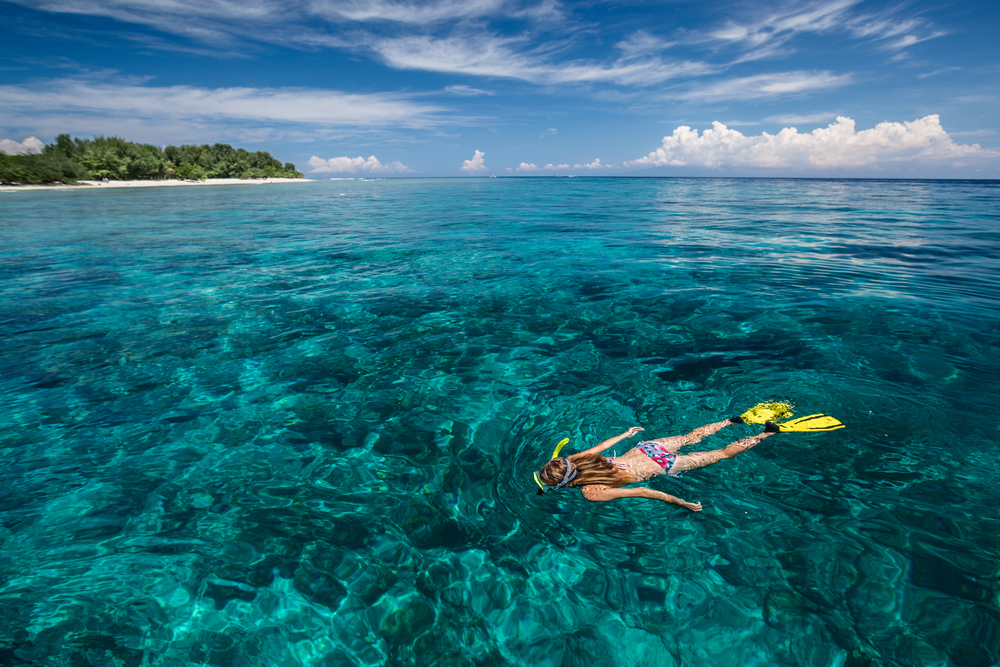
Lady Elliot Island, Bundaberg, Queensland
Lady Elliot Island, approximately 80 kilometres northeast of nearby Bundaberg on the Queensland coast, is situated at the most southern point of the Great Barrier Reef. With outstanding snorkelling opportunities amongst the surrounding Coral Cay for both beginner and advanced snorkellers, Lady Elliot Island is accessible via air only from Bundaberg, the Gold Coast or Brisbane.
On the eastern side of Lady Elliott Island, you shall find ‘The Lagoon’, the perfect location for calm and gentle snorkelling, which is well suited for snorkellers with little practice under their belt, as well as kids. The Lagoon’s clear waters are home to a wide variety of tropical fish and colourful coral, as well as clams and sea turtles.
If you are looking for somewhere around the island for more advanced snorkelling, you can’t go past ‘Lighthouse’ and ‘Coral Garden’. With deeper waters and situated on the western side of Lady Elliott Island, each of these snorkelling sites welcome numerous mega faunae, in addition to schools of superb tropical fish and stunning coral. Some of the mega faunae you may expect to come across while snorkelling at Lighthouse and Coral Garden are manta rays, dolphins, reef sharks and even whales!
Tangalooma Wrecks, Moreton Island, near Brisbane, Queensland
Moreton Island, located just 40km from the nearby city of Brisbane is famous for amazing snorkelling at the Tangalooma Wrecks, which are comprised of 15 sunken ships, originally positioned by local fishermen in 1963, to form a breakwater. More than 175 different species of tropical fish call the Tangalooma Wrecks home, and include yellowtail, kingfish and lionfish. You can reach the wrecks from the shore of Moreton Island, and in addition to numerous different types of fish, you may also have the opportunity at this unique snorkelling site to see turtles, moral eels, stingrays and dolphins.
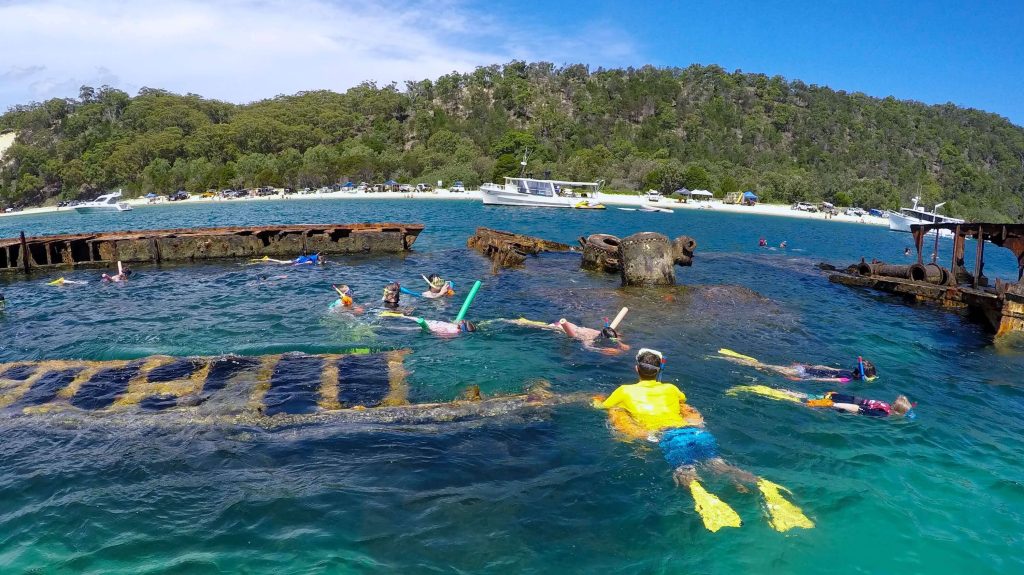
Image Credit: dolphinsinparadise.com.au
Lord Howe Island, off the coast of New South Wales
Lord Howe Island, a pristine, small, World Heritage-listed island, is located 350km from Sydney Harbour, and hosts the most southerly coral reef on the planet. Visitor numbers are restricted to just 400 people at any given time, and the island is a mere 11km in length and 3km from side to side.
Despite its small size, Lord Howe Island offers incredible snorkelling opportunities, and is home to more than 500 different species of fish, as well as 90+ different types of coral. Some of the island’s key snorkelling sites, offering outstanding visibility, include Erscott’s Hole, Ned’s Beach and Lagoon Beach (which can all be reached easily from the shore of the island).
Jervis Bay Marine Park, New South Wales
The beaches surrounding the Jervis Bay Marine Park are famous the world over, for the whitest sand on the planet, not to mention crystal clear turquoise water. Jervis Bay is a beautiful coastal town, located roughly 180 kilometres (or 3 hours’ drive) south of Sydney, and the Jervis Bay Marine Park stretches over 100 kilometres of coastline. The area is home to some of New South Wale’s most outstanding snorkelling (and scuba diving) sites.
Jervis Bay is famous for sighting whales off the coast, as they make their way north on an annual basis. While snorkelling in the calm waters of Jervis Bay Marine Park you’ll have the opportunity to see a wide number of fish species, including cuttlefish, eastern blue devil fish and pipefish. You may also be fortunate enough to witness weedy sea dragons or perhaps an octopus. This marine park is also famous for its frequent visits from penguins, seals and dolphins, too!
Flinders Pier, Mornington Peninsula, Victoria
Flinders Pier, located on the Mornington Peninsula, an hour or so out of the heart of Melbourne, is famous for its weedy sea dragons, and is one of Australia’s top locations for sighting these exquisite, majestic animals via snorkelling.
In addition to weedy sea dragons, you also have the chance to spot different types of fish (such as cuttlefish and toadfish), as well as crabs, starfish, squid and shrimp. Large rays also frequent the waters surrounding Flinders Pier on a fairly regular basis. At the pier’s end you will find a discarded structure, in which numerous fish and crayfish live. The area surrounding the pier is also home to a number of seagrass beds, soft corals and sponges.
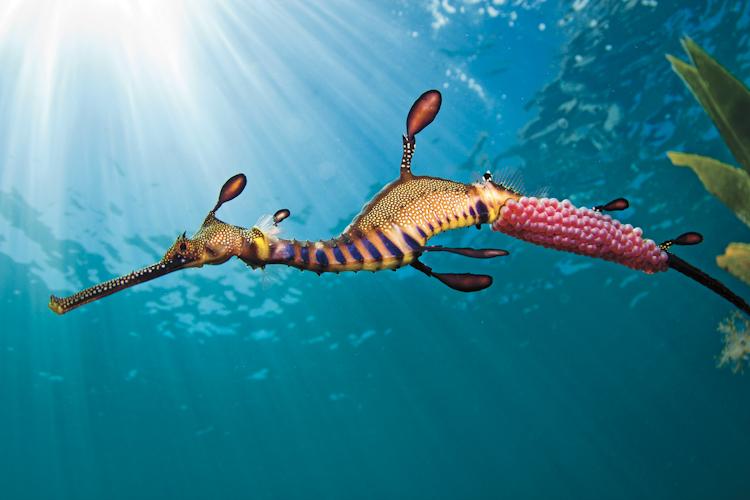
Image Credit: ocean.si.edu
As you can see, when planning an adventure along the east coast of Australia, you are spoilt for choice when it comes to amazing snorkelling opportunities!


